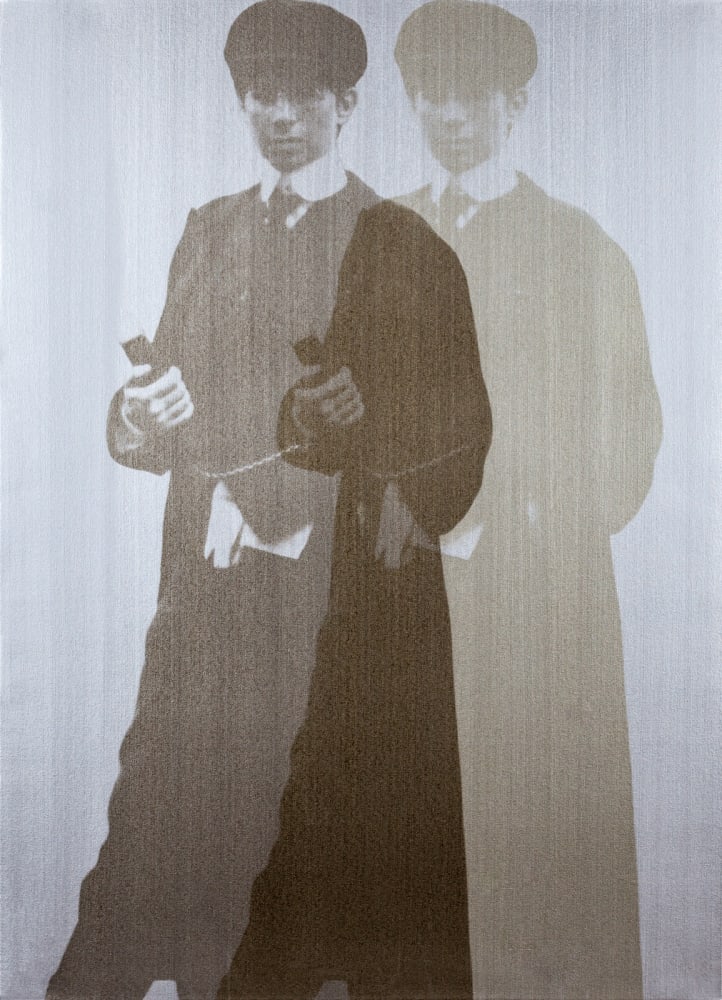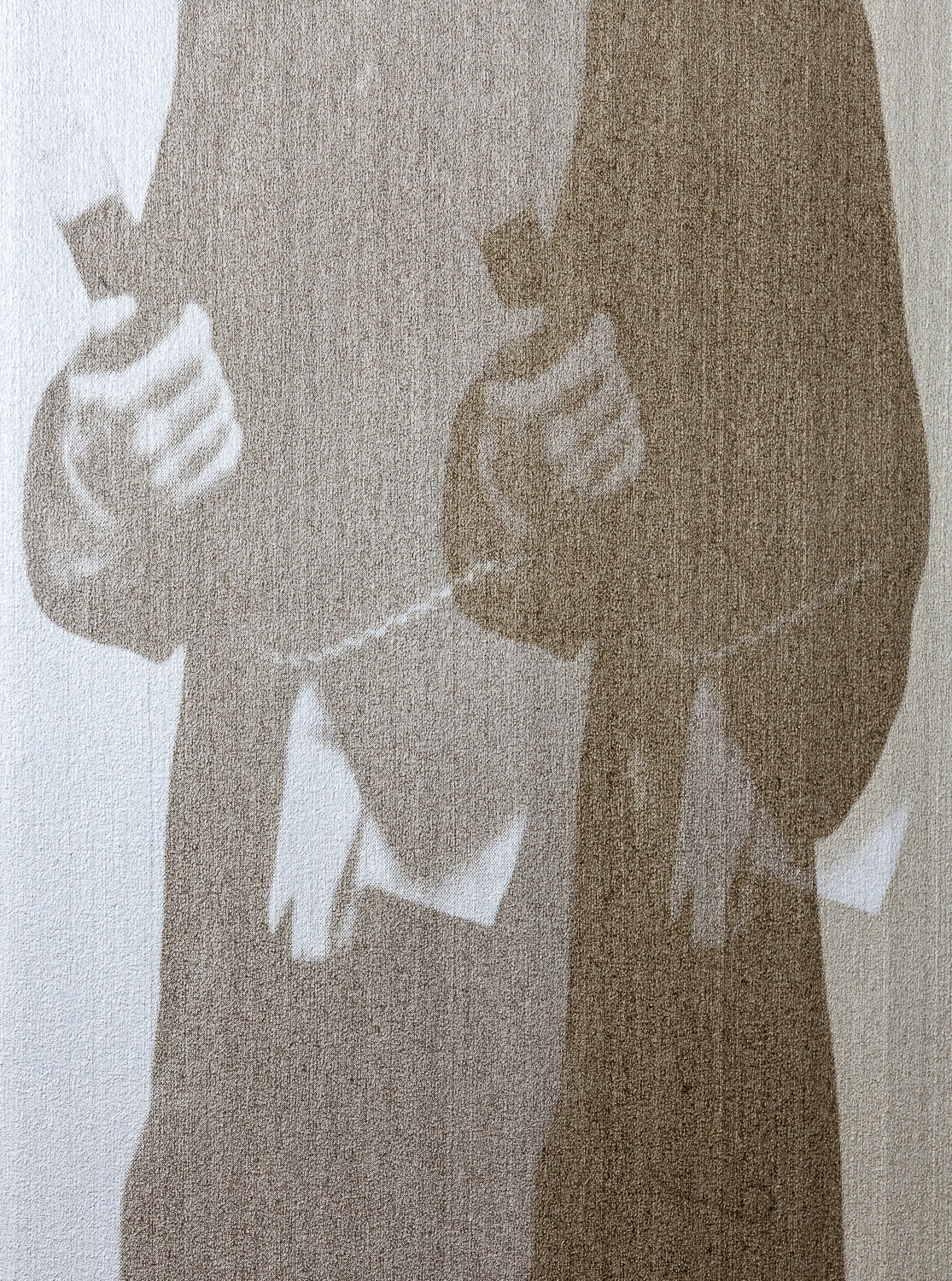-
Artworks
Deborah Kass
Double Ghost Yentl (My Elvis), 1997Silkscreen and acrylic on canvas72 x 52 x 1 1/2 in
182.9 x 132.1 x 3.8 cm7352Further images
This painting, which depicts an image of Barbara Streisand as she appeared in the film Yentl, is part of Deborah Kass's Jewish Warhol series. To create this body of work,...This painting, which depicts an image of Barbara Streisand as she appeared in the film Yentl, is part of Deborah Kass's Jewish Warhol series. To create this body of work, Kass employs Warhol's signature mass-production printing process, swapping Warhol’s subjects out with images of people who have been significant to her, such as artists Cindy Sherman and Elizabeth Murray, art historian Linda Nochlin, and of course in this case, Streisand. The series to which this piece belongs emulates Warhol's Elvis series, which depicts Elvis Presley as a cowboy in the film Flaming Star. A perfect contrast to the pop-hetero-white-Christian masculinity projected by Elvis’s cowboy, Yentl tells the story of a Jewish woman who dresses and lives as a man in order to receive an education in the Talmudic Law, and features a love triangle between herself (dressed as a man), another man, and another woman. Like Warhol’s Elvis, Kass' Yentl speaks to a story of rebellion, power disruption, and gender politics. Kass’s Jewish Warhol series is fundamentally an effort to challenge the lack of Jewish figures in Warhol's work, and the lack of representation of marginalized people within the framework of art history. Yet, Kass also makes clear her love and profound respect for Warhol as an artist. When Kass was young, the giants of Pop Art and Minimalism defined themselves by their opposition to each other—Pop Art could be anything; Minimalism was everything Pop Art wasn’t. However, Kass saw things differently. Pop and Minimalism were both equally radical to her. Her dual admiration, along with her commitment to examining the political climate, expresses itself abundantly in this series. “The resonance with this work is that so many can identify with it,” Kass explains. “Identity is a noun. It is WHAT you are. It’s how you come out of your mother. But when you identify with something outside of yourself, it’s active. It’s a verb. That’s how you start constructing WHO you are as a subject, a person—internally, emotionally, spiritually—and imagining how you can be in the world. Now people say, ‘If you can see it you can be it.’ This is the very meaning of inspiration.”Provenance
Artist's studio, NYC
Kavi Gupta, Chicago
Exhibitions
Deborah Kass: My Elvis +, Paul Kasmin Gallery, 2013, NYC








